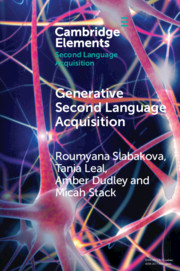Element contents
Generative Second Language Acquisition
Published online by Cambridge University Press: 31 August 2020
Summary
- Type
- Element
- Information
- Online ISBN: 9781108762380Publisher: Cambridge University PressPrint publication: 24 September 2020
References
- 21
- Cited by

